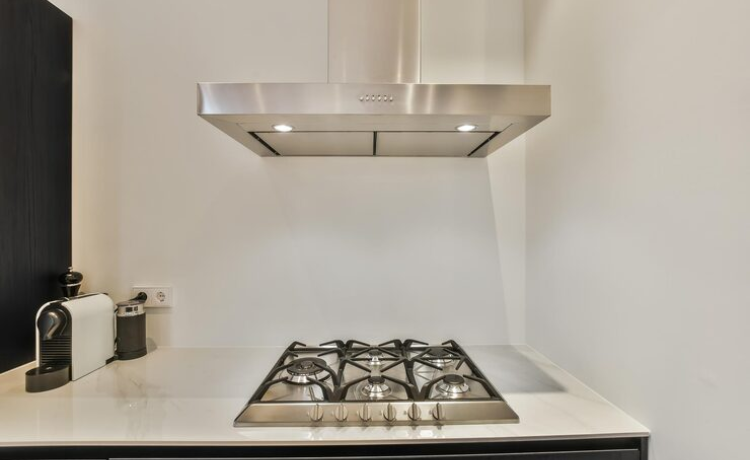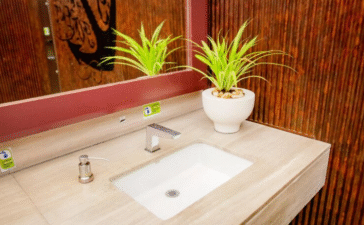A clean, fresh-smelling kitchen is the heart of a happy home. A key player in achieving this is the range hood, an appliance that works tirelessly to remove smoke, grease, and cooking odors. While traditional ducted models vent air outside, they aren’t always a practical option, especially in apartments, condos, or homes where external ducting is impossible. This is where ductless range hoods come in.
Ductless, or recirculating, range hoods have grown in popularity as a flexible and effective ventilation solution. They offer a powerful alternative for modern kitchens, providing clean air without the need for complex and costly ductwork. This guide will walk you through everything you need to know about ductless range hoods, from how they work to choosing the best model for your home. By the end, you’ll understand if this modern kitchen appliance is the right fit for your cooking space.
What Is a Ductless Range Hood?
A ductless range hood is a kitchen ventilation system that cleans and recirculates air instead of venting it outdoors. Its primary function is to pull in contaminated air from your cooktop, filter it, and then release the clean air back into the kitchen. This process is made possible by a sophisticated internal fan and a multi-stage filtration system.
The magic happens inside the unit. As the fan draws air upward, it first passes through a mesh filter, typically made of aluminum or stainless steel, which captures airborne grease particles. After this initial stage, the air moves through an activated carbon filter, also known as a charcoal filter. This is the crucial step for odor control, as the porous carbon material traps smoke, fumes, and unpleasant smells. Once the air has been scrubbed of grease and odors, the recirculation system pushes it back out into the room, completing the air circulation cycle.
How Effective Are Ductless Range Hoods?
A common question is how well a ductless range hood performs compared to its ducted counterpart. The effectiveness of a ductless model largely depends on the quality of its filters and the power of its fan. High-quality carbon filters are exceptionally good at trapping odor-causing molecules and fine smoke particles. The mesh filters excel at grease removal, preventing sticky residue from settling on your cabinets and walls.
However, it’s important to set realistic expectations. While highly effective at air filtration, ductless hoods do have limitations. They do not remove heat or moisture removal from the kitchen, as the air is simply recirculated. In contrast, ducted models expel heat, steam, and humidity directly outside. A ductless range hood is an excellent choice for kitchens where external venting isn’t feasible, for homeowners who do not cook frequently with high heat, or for those whose cooking style doesn’t produce excessive steam. For heavy-duty cooking, a ducted system generally offers superior performance.
Benefits of Ductless Range Hoods
Choosing a ductless model comes with several significant advantages that make it a compelling option for many homeowners.
The most notable benefit is the elimination of ductwork. This makes it an ideal solution for apartments, condos, and homes with structural limitations that prevent venting to the outside. The easy installation process is another major selling point. Without the need to cut through walls or run extensive ducting, a ductless hood can often be installed as a DIY project, saving both time and money.
Their versatility also extends to aesthetics. Ductless range hoods are available in a wide array of styles, from sleek under-cabinet models to elegant island and wall-mount designs. This space-saving and stylish flexibility ensures you can find a unit that complements your modern kitchen appliances and overall decor.
Installation and Maintenance
Proper installation and regular maintenance are key to ensuring your ductless range hood operates at peak efficiency.
Installation Process
Installing a ductless range hood is significantly simpler than installing a ducted one. Most models come with a template for marking the mounting holes on the wall or under a cabinet. The basic steps for a DIY range hood installation involve securing the mounting bracket, attaching the hood, and connecting it to a power source. Because there is no ductwork to connect, the process is straightforward. Always consult the manufacturer’s guide, like those provided by major retailers such as The Home Depot or Lowe’s, for specific instructions on mounting ductless range hoods.
Maintenance and Filter Replacement
Consistent maintenance is vital for performance. The metal grease filters are typically washable and should be cleaned every few weeks, depending on your cooking habits. They can often be washed by hand or placed in the dishwasher.
The most critical maintenance task is filter replacement for the charcoal filters. These filters become saturated over time and lose their ability to absorb odors. Manufacturers generally recommend replacing the range hood filters every three to six months. Sticking to this schedule ensures your hood continues to provide effective odor control.
Ductless vs. Ducted: Which Is Right for You?
Choosing between a ductless and a ducted range hood depends on your kitchen layout, cooking habits, and budget.
Ducted hoods excel at removing all airborne contaminants, including heat and moisture, by venting outside. They are the preferred choice for professional-grade ranges or for those who frequently engage in heavy frying, searing, or boiling. However, their installation is more complex and costly.
Ductless hoods are the go-to for convenience and flexibility. They are less expensive to install and can be placed almost anywhere. If your home cannot accommodate ductwork or if you are looking for a more budget-friendly ventilation solution, a ductless model is the superior choice.
Top Features to Look for in a Ductless Range Hood
When shopping for a ductless range hood, consider these key features to ensure you select a high-performing model.
First, check the airflow capacity, measured in Cubic Feet per Minute (CFM). A higher CFM indicates a more powerful fan, but for a ductless system, extremely high CFM isn’t as critical as filter quality. Look for a balance between power and noise level, as low noise range hoods make for a more pleasant kitchen environment.
Lighting is another important feature. Most modern hoods come with energy-efficient LED lights to illuminate your cooktop. Finally, examine the filters. Look for durable, easy-to-clean metal grease filters and high-quality charcoal filter efficiency for maximum odor absorption.
Common Mistakes to Avoid
To get the most out of your ductless range hood, avoid these common pitfalls. The most frequent mistake is neglecting filter replacement. An old, clogged charcoal filter will do little to clean the air. Another issue is choosing the wrong size. Your range hood should be at least as wide as your cooktop to capture contaminants effectively. If you notice airflow problems or persistent odors, it’s likely a sign that your filters need cleaning or replacing.
Also check: “ss kitchen hood“
Your Kitchen, Your Choice
A ductless range hood is a smart, stylish, and practical solution for kitchens without access to external venting. By offering effective air filtration, easy installation, and design flexibility, it meets the needs of countless modern homes. When you prioritize regular maintenance and select a model with the right features for your cooking style, a ductless hood can keep your kitchen air fresh and clean for years to come.
Frequently Asked Questions
Is a ductless range hood better than a ducted one?
Neither is universally “better”; it depends on your needs. A ducted range hood offers more powerful ventilation by removing heat, moisture, and all airborne particles from the kitchen. A ductless range hood is better for homes where venting outside isn’t possible, as it’s easier and cheaper to install while still being effective at removing grease and odors through its filtration system.
How often should I replace the filters in a ductless range hood?
The metal grease filters should be cleaned every few weeks. The activated charcoal filters are not washable and need to be replaced. The standard recommendation for range hood filter replacement is every three to six months, but this can vary based on how often you cook.
Can I install a ductless range hood by myself?
Yes, in most cases. A ductless range hood installation is a common DIY project because it doesn’t require cutting holes for ductwork. Most homeowners with basic tools and skills can mount the unit and connect it to power by following the manufacturer’s instructions.
Do ductless range hoods actually work?
Yes, they are very effective at what they are designed to do: filtering grease and odors from the air before recirculating it back into the kitchen. While they don’t remove heat or steam, they significantly improve air quality and prevent grease buildup on surfaces.
How do I know when to change my charcoal filter?
If you notice that cooking odors are lingering longer than usual, it’s a strong indicator that your charcoal filter is saturated and needs to be replaced. Following the manufacturer’s guideline of every 3-6 months is the best practice to ensure optimal performance.
Are ductless range hoods noisy?
The noise level, measured in sones, varies by model. While more powerful fans can be louder, many manufacturers now offer low noise range hoods designed for quiet operation. Check the zone rating before purchasing; a rating of 1-3 sones is considered quiet.











